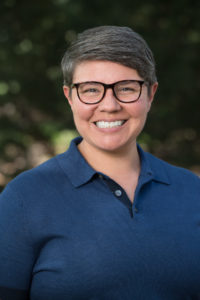
Over the last year and a half, I have been fortunate to sit on a panel with other university experts including representatives from our Office of the General Counsel who have had the opportunity to speak to the campus regarding navigating free speech – both broadly and in the classroom, specifically.
When it comes to what constitutes free speech in the classroom, many faculty can feel uneasy by the thought of a class discussion going in a direction they are not comfortable with and students believing it is their First Amendment right to take it there. Although students may utilize their First Amendment rights in the classroom setting, faculty have the right to take a proactive role in organizing thoughtful engagement based around shared understanding of the ground rules and goals of dialogue.
We also must acknowledge as a campus community the inherent tension that exists between our First Amendment rights and the potential harm exercising those rights can cause to others. We hold a tremendous responsibility and opportunity to help students find their voice. Through the honing of their logic, reason, and words, we can teach students to either argue against, stand in solidarity with, or better advocate for issues they care about deeply, and from whatever vista they view the word.
We want faculty and students to use the classroom to create intentional learning environments where we can discuss difficult and at times controversial topics. Proactive strategies exist to empower faculty in creating such environments.
The First Amendment Conversation Series will continue this semester; check the website for more information and dates.
Classroom strategies
The following is a list of strategies for faculty to encourage classroom dialogue and co-create an environment that both upholds the First Amendment and considers the impact our words have on others in the room.
• Anticipate conflict. How we think about potential conflict matters. Do we dread conflict arising? We can be better prepared for conflict in the classroom when we anticipate it. We suggest reviewing your syllabi for content which may be seen as controversial and determine how you will go about creating an environment that encourages discussion around that content and minimizes opportunity for harm.
• Use the Principles of Community. In December 2014, the University adopted the Principles of Community to articulate our shared values at CSU. Since then, many faculty have used the Principles by adding them to their syllabi, addressing them in the first class, or having students discuss them in class. The Principles allow you to communicate the classroom environment you hope to create.
• Ask for a “do over.” Faculty have expressed to me that when conflict arises in the classroom, they do not always know what to do in that moment. I believe this is a common experience for many. We often believe we will have the magic words to say on the spot, but in reality it often takes time and clarity to know how to address conflict. Do not be afraid to ask your class for a “do over.” By doing so, you will be addressing the issue and modeling the reality of negotiating conflict.
• Co-create ground rules. Setting ground rules allows faculty and students to co-create classroom expectations and norms. It allows students to have agency in their space and for faculty to express expectations of your time together. We recommend carving out time the first day of class and creating them together. Often, students will hold one another accountable to those guidelines, without intervention by you. It allows for all members to know what is expected of them and what they can expect from one another.
• Take responsibility. The classroom environment is your responsibility to uphold – so feel empowered to do so. This includes being intentional about what is included in the syllabi, how the classroom climate is created, who gets invited to guest speak, and the content of pair or small-group interactions.
As a university, we have a tremendous responsibility, but we also have a tremendous opportunity. By using proactive classroom strategies, we will be better prepared to navigate free speech issues, be prepared to engage in dialogue across difference, and to encourage students to use their voices to better articulate their passions. What a tremendous opportunity that is!
Ria Vigil is Assistant Vice President for Inclusive Organizational Practice for Colorado State University.